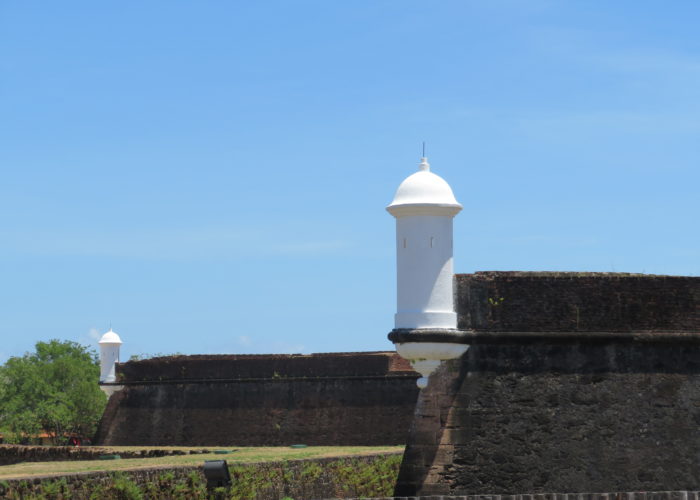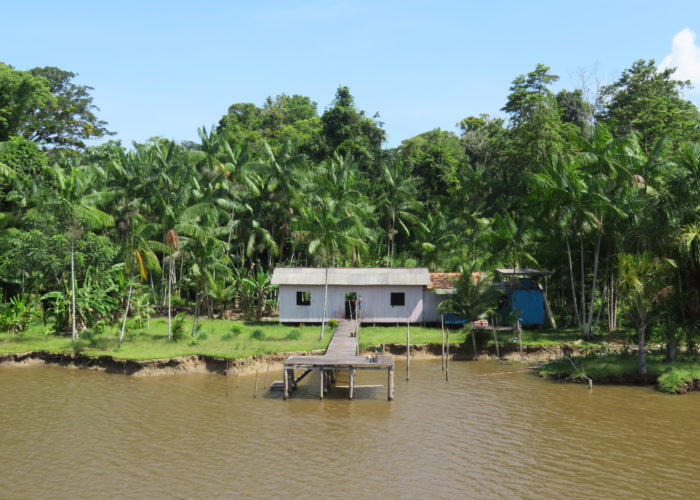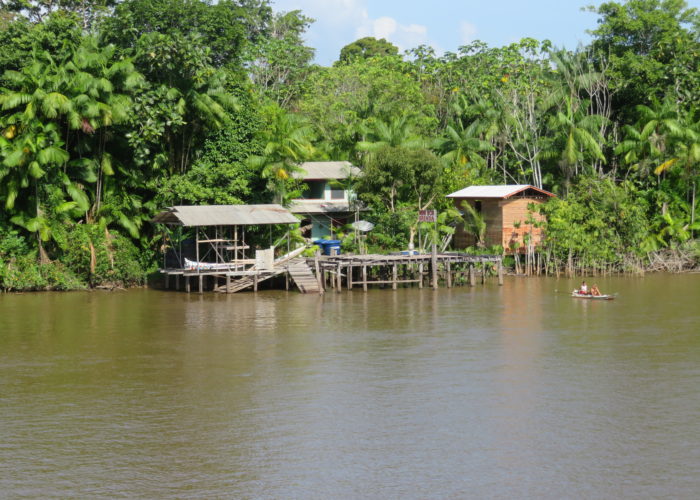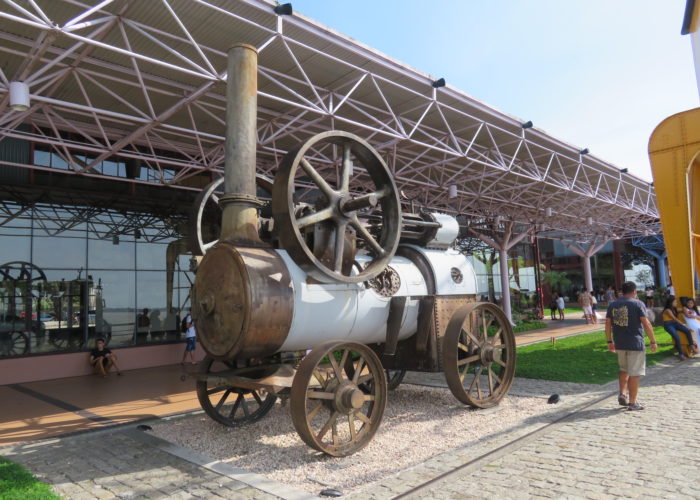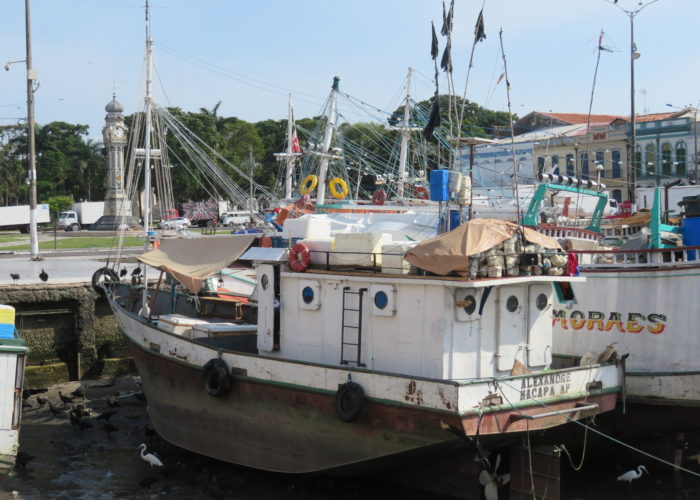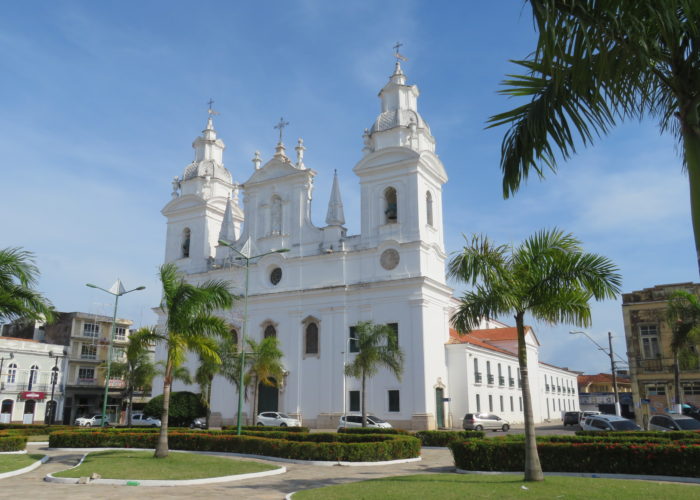From French Guiana after an overnight stop in Oiapoque we reached the mouth of the Amazon at Macapá, a town of half a million sitting on the North shore of the Amazon. It’s only connection with the major centres of Brazil is either by river boat or plane. Macapá, as large cities go in Brazil, felt safer than most and during our visit was in full flow for the Brazilian presidential election which is due to have its final runoff vote in the end of October. The candidate from the right Jair Bolsonaro was far more prominent in terms of the visibility of his posters and supporters.
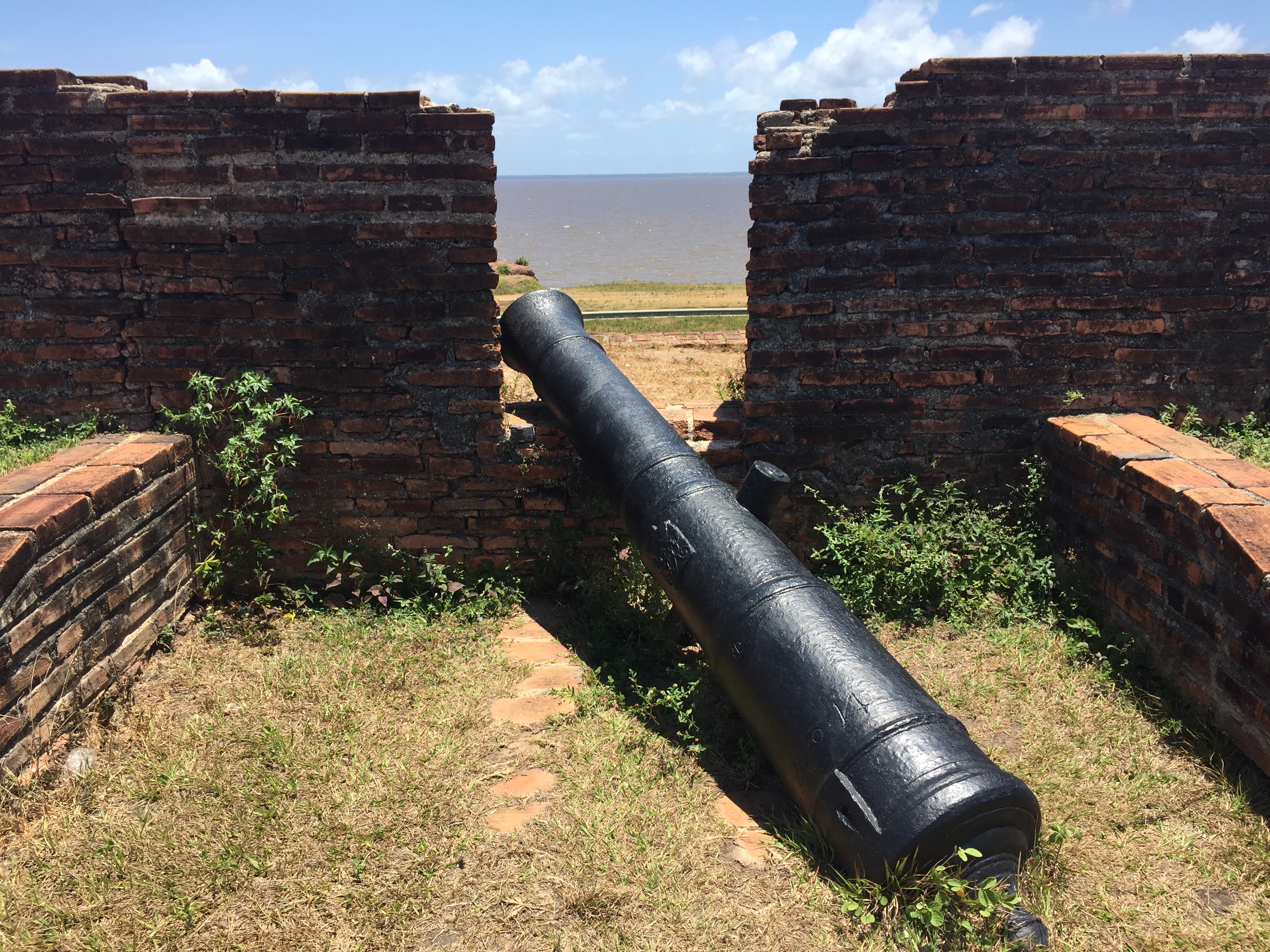
The big attraction in Macapá is the old fort, Fortaleza de São José de Macapá, which has to be one of the best preserved forts in all South America. Not only are the battlements are complete, so are the original buildings inside the fort that neatly make a quadrangle that mirror the fortified walls. All the buildings have been nicely restored in white paint, the old chapel is particularly impressive in its modesty and a great example of what these chapels were like in the early days of the Portuguese settlement in the outposts of their empire. The fort is shaped as a pentagon with five square corners each with a slope running up to them to enable the canons and munitions to be easily supplied to the defenders on the battlements. The rear battlement protects the entrance from land while the others form a square. On the battlements there are the original metal canons of varying sizes all painted black. The canons are simply sitting in each battlement, some with the remains of their wooden gun carriages.

Macapá also boasts a large active fish market which sits in a clean modern market building full of enormous river fish. However the surrounding area and creeks are much less clean, with lots of rubbish and especially the curse of modern life, plastics.

The river ferry to Belém leaves from the port of Santana and crosses through many channels and creeks around the Ilha do Marajó which dominates the Amazon delta. The crossing took 25 hours to cover the 584 kms, the shear scale of the Amazon is mind blowing – the journey to Manaus at the heart of the Amazon takes four days. The river, with slow barges carrying vehicles and other bulky industrial goods, acts as the main transport artery for the region. The ferry had a capacity for nearly 1,000 passengers. The lower deck carried some vehicles and lots of produce. The next two decks were equipped with hooks, from which each passenger hung their hammocks, all crisscrossing the deck and crammed next to each other. Those in the middle had to crawl under the hammocks on the edge to get around the boat. At night the ferry got quite cold, and those regular passengers in the know all had some form of blanket or cover to protect them from the drafts and wind.

Belém on the south side of the Amazon is one of those mega Brazilian cities, which with a population of 1.4 million and a total of 2.5 million in the metropolitan area. It is one of the oldest cities in Brazil, built by the Portuguese in 1616 and is the oldest city in the Amazonian Region. The old part of the city contains a restored Portuguese fort which defended the mouth of the Amazon. Most of the old buildings are built in the Portuguese style with the distinctive ceramic tiles cladding the external walls and balconies on the upper floors with ornate metal grills.

The old city centre, like many Brazilian cities has suffered from a flight to the suburbs, where most of the middle classes reside. Thus the old city centre has that feel of decay, with most buildings requiring renovation and cheap shops lining the main shopping arteries. The suburbs and roads leading into the city contain many shiny new shopping malls and is where modern Belém is focused.

The markets are particularly impressive and a highlight of any visit to Belém. The Ver-o-Peso Fish Market is spotlessly clean, in complete contrast to the surrounding streets and river front. The variety of fish was impressive, including some of the biggest cat fish we have ever seem. Nearby is the main municipal market, which sells meat and unusually religious artefacts. The market buildings have an impressive wrought ironwork structure. The ironwork forms a practical defence against the many vultures that scavenge around the city centre. There is so much rubbish in places that these birds are very well fed. Indeed they form the role of pigeons in most other cities, albeit being much larger and more intimidating.
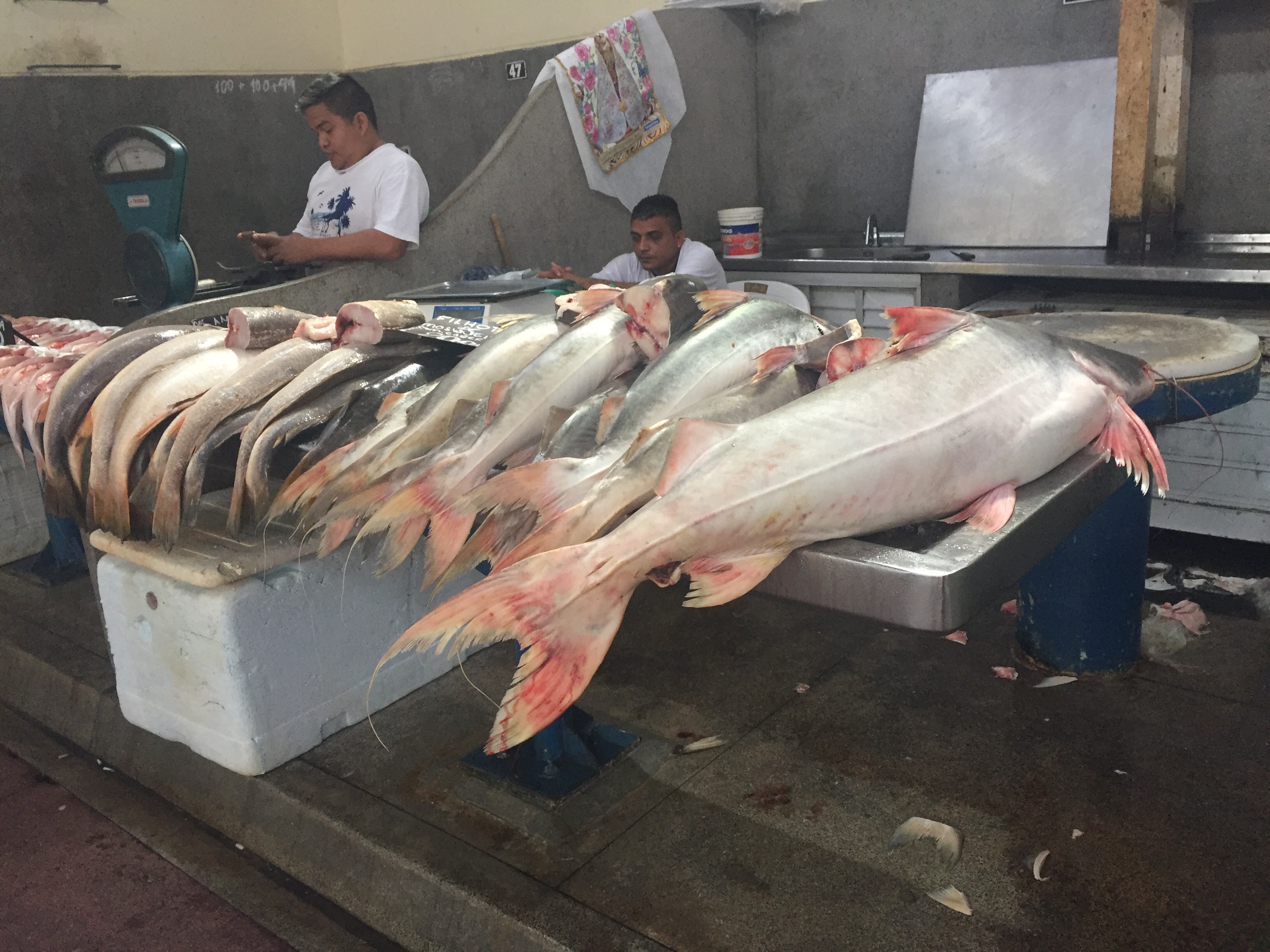
As part of attempts to revitalise the old city centre a group of warehouses have been renovated into a retail area complete with restaurants and a microbrewery which brews and sells a range of nine very drinkable beers, called Amazon Beer. This area is full of life in the evening with largely a young crowd.
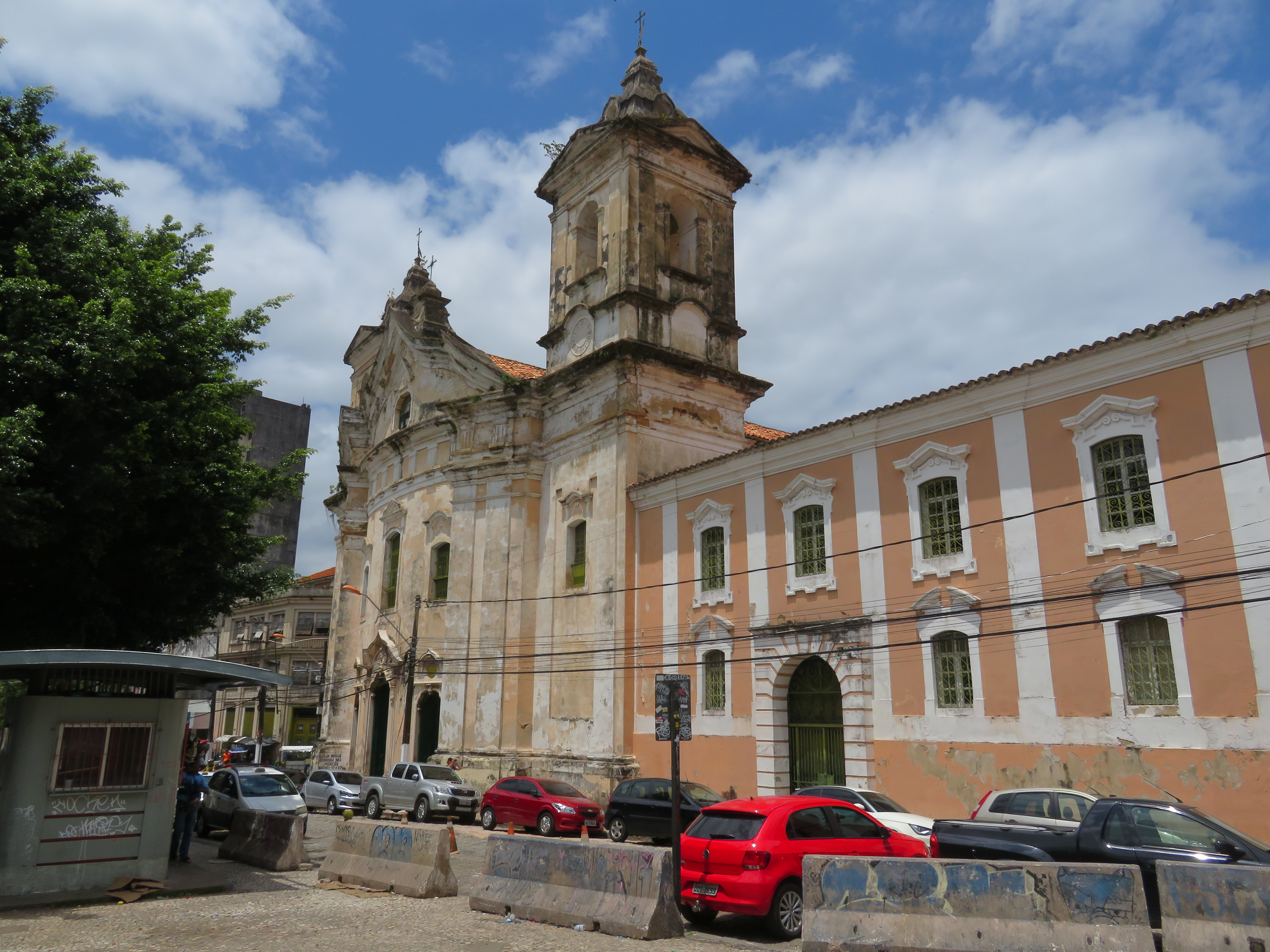
The municipal buildings around Praca Dom Pedro are a legacy to more prosperous times during the rubber boom, but could easily be made attractive again with a bit of investment. The main cathedral is a peaceful sanctuary in the old town, but is eclipsed by the stunningly beautiful Bascílica de Nossa Senhora de Nazaré, whose interior has to be one of the most beautiful churches we have been to in South America. It has none of the over the top gold and carvings of many of the Spanish churches, instead it has attractive light mosaics, bright stain glassed windows and wooden ceiling. It’s simplicity and light make it a peaceful place, and the service that we witnessed, complete with the melancholic Portuguese singing, was a beautiful escape from some of the poverty and violence that exists in Belém.

Belém is a fascinating city, and one that will always be at the heart of the development of the Amazon Ang the North of Brazil. Its architecture is particularly attractive, but it also suffers from much of the violence and poverty that scars much of Brazil. Indeed on the weekend we were there, some 19 people were murdered in less than 24 hours was the headline in one of the local papers.
Date: 17/10/2018 to 23/10/2018

